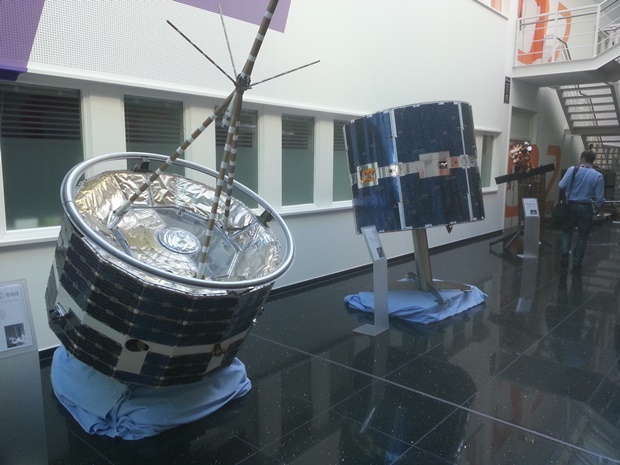10.06.2015: Unfortunately I did not manage to fly to the Norwegian homebuilders meeting a few weeks ago, but I managed to fly to the Swedish one in Falköping (ESGK) last weekend.
We left on Thursday morning, 04.06.2015 in beautiful weather from Lommis,

with a first stop for customs in Erfurt (EDDE).

A lot of runway for a small plane…
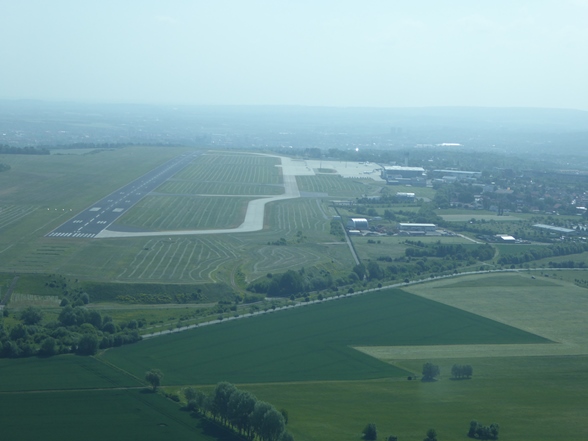
I chose Erfurt first of all because we took off at the MTOM of 630 kg (we took camping gear), and as my permitted landing weight is 30 kg lower I had to chose an airport at least 2 hours away from Lommis to burn sufficient fuel before the first landing. I could have taken off with less fuel, but that would mean more fuel stops, which is not convenient. Erfurt also has permanent customs, so no need to announce yourself in advance and for a specified arrival time, both make planning easier. Erfurt is one of quite a few similar airports in Germany, where infrastructure development was not followed by traffic increase, but as it is the capitol of Thüringen they still keep customs available during operating hours.

Germany has liberated cross border operation, with no need to stop for passport control when coming from or flying to Schengen countries, and no need to stop for customs from/to EU countries. Switzerland is only Schengen and not EU, therefore the customs stop. We did however take advantage of this rule later in the trip when flying from Denmark to Germany.
We continued shortly after landing to our first night stop in Wismar (EDCW), passing on our way the Elbe river,…

…and the city of Schwerin,

with its impressive caste.

Below Wismar, when approaching from the southwest. The airfield lies to the northeast, so we did a loop around the city…

…passing the large wood port, where both lumber and wood pellets are being processed and shipped.
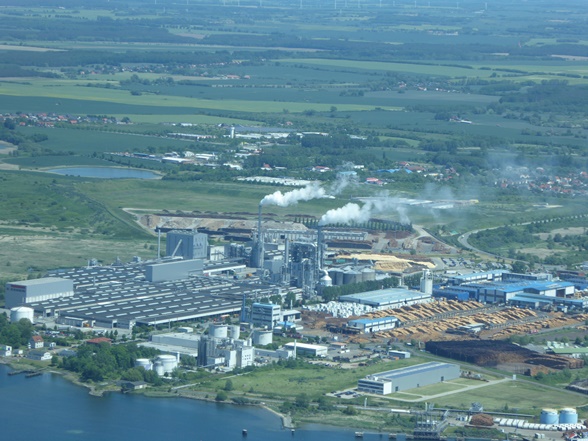
We had around 10 kts of crosswind during the landing, which created quite some turbulence due to the large trees on both sides of the runway, a pattern that would repeat during the following days.
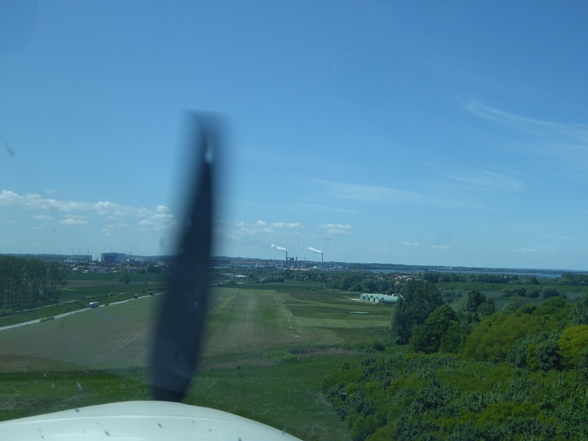
Wismar is a UNESCO world heritage listed small town at the western end of the Baltic sea. Wismar aerodrome is a typical small airfield, with a 640 m grass runway and very friendly people. We refueled (60 l), tied down the plane and took a taxi to the town, where I had pre-booked a hotel. As we arrived in the town shortly after 13:00 we had ample time to do an extensive tour, followed by a nice dinner down at the harbour.


We left Wismar on Friday morning, 05.06.2015, below a picture of our plane parked in front of the new clubhouse they are just putting up. This seems to be done by volunteers of the club, at least one of the workers walked up to our plane and asked questions about my LED strobe lights.

Below a last look at the airfield, with the city visible to the right, 10 minutes away by taxi.

Our destination for Friday was Endelave (EKEL) in Denmark, as we had promised to our self during our last visit that we would camp there during our next stopover. Entry / exit regulations in Denmark are more strict than in Germany, with a stop required at a customs airport (even though some Danish colleagues regularly fly to/from Sweden without doing so). but there are some airfields close to the German border between which a simplified procedure exists (even without requiring a flight plan). Wismar and Endelave are not in that category, but Kiel and Ærø are, so we first flew to Kiel (25 minutes) and then from there to Ærø.
Near Travemünde we saw one of the ferries going to Finland, a trip on our list for winter when there is ice, but for the last few yeas this did not happen.

We then flew over some really nice lakes, that’s probably nice sailing if you don’t like salt water…

In Kiel we again saw some good size ferries and cruise ships, that’s another city to remember for some overnight stop in the future.
Kiel Airport is a former German Navy airfield, with a 1400 m asphalt runway, again more than enough for the SportCruiser. They did have some scheduled flights years ago, but that stopped completely so now it is purely a private and business aviation airport. As nearly everywhere in Germany they have low landing fees and friendly staff, a stop to recommend.




We did only a quick stop, just to initiate the border crossing procedure to Ærø. Turning north after departure we passed the German Naval Memorial, an impressive structure which is more than 70 m tall.

Soon afterwards we had Ærø in sight, well known from our visit last year.
Below the town of Ærøskøbing, from where we did a straight in approach to the airfield.

The picture below shows how much crosswind there was, as mentioned earlier this was the case for nearly each landing of the trip.
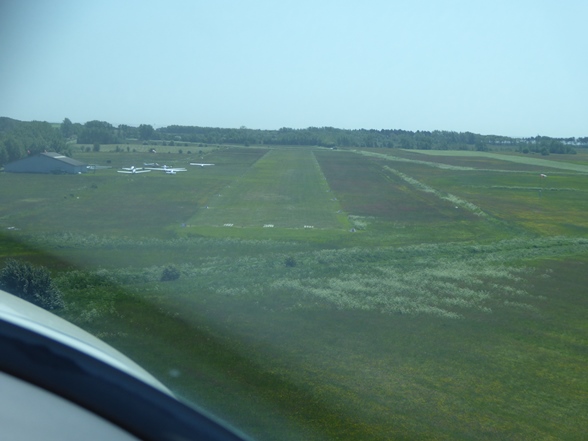
We rented bicycles to ride to the town of Marstal, which is around 4.5 km from the airfield, just to discover that it was the Danish National Holiday and everything was closed. Luckily we found a small restaurant to have lunch.


To be sure we would find some food in the evening on Endelave I called the only restaurant there to check their opening hours before cycling back to the airfield.


We departed by flying around Marstal and then headed northeast towards Swendborg, Nyborg and Endelave.

We did not get very close to the bridge over the Størebælt, maybe 20 km from the towers, but even from that distance it is an impressive structure.


We also passed Kerteminde, a town where we had already stayed several times over the last maybe 25 years, but always when travelling by car.

A bit north of Kerteminde, in Munkebo liesd the large Lindø shipyard, which was closed in 2012. It is now a large industrial park, with a lot of shipping and off shore related activity gong on.

We passed a ship being towed out to the open sea, which was probably there for some repair or outfitting.

From Lindø it’s only a short hop to Endelave, where we landed from the sea side due the wind.

Below a view of the runway, one of the nicest grass runways I know. On the left side one can see the windsock, showing some crosswind from the right side.
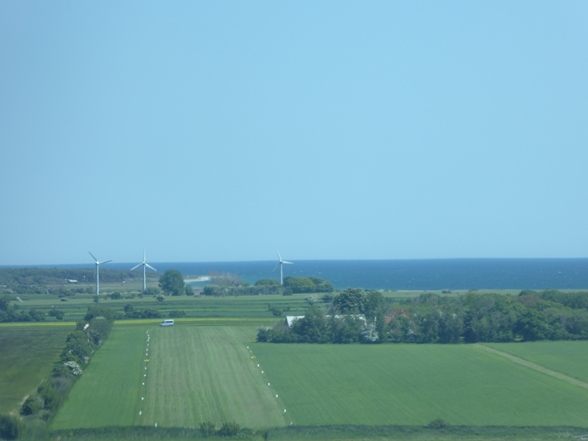
For the 50th anniversary of the airfield they put an impressive panel on the wall of the barn….

There were quite a few planes at the airfield, but except one they all left towards the evening.

We took two bicycles and rode to the “town”, which is around 2 km away.

The last ferry of the day just left, so we rode back to put up our tent.

On the way we passed a very nice, old house with the funny name Helvetia written on it, makes you feel at home.

One of the sons of the owner of the airfield greeted us when we arrived, and told us to move the plane a little closer to the barn once the others had left as there was a storm coming and it would be better protected from the wind like that. We did so, then tied it down…
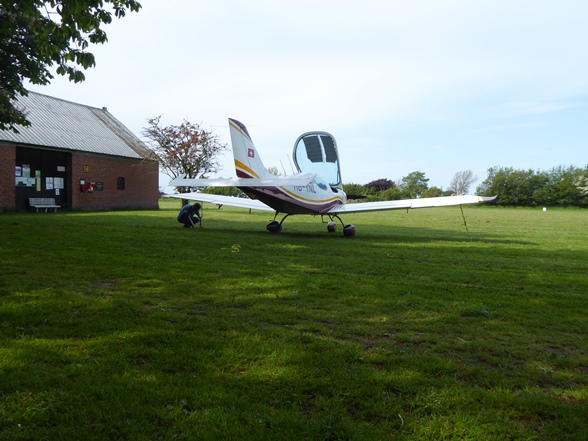
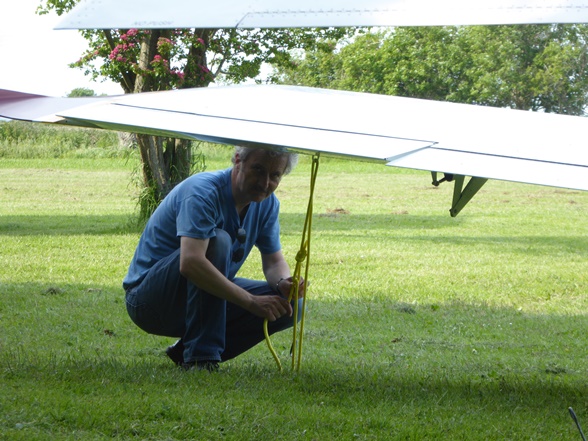
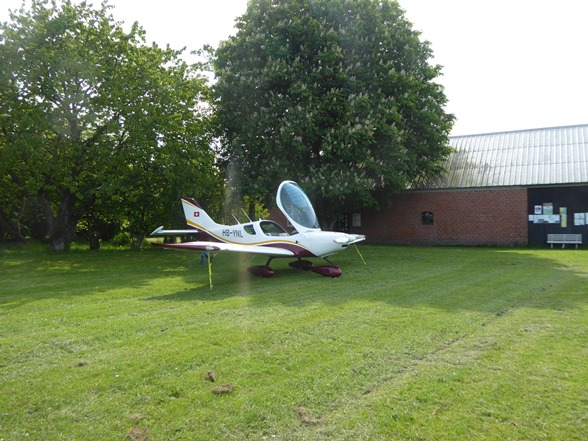
…and put up the tent in the little forest / park next to the runway. There is even a toilet and kitchen in the barn, so a perfect place for a stopover.
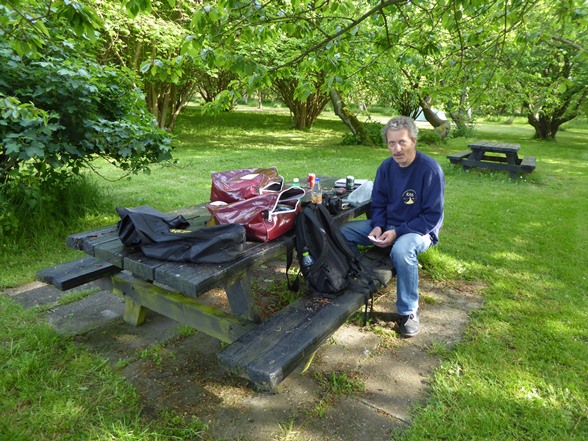
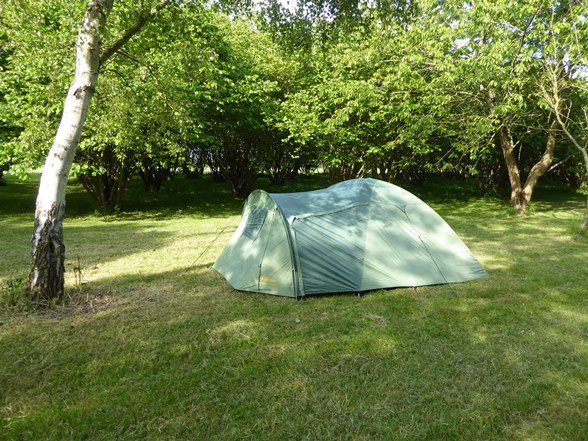
We then jumped back on the bikes and went to have dinner in the Endelave Kro. When we returned from dinner we noticed that the weather had indeed changed to the worse, with what looked like a fold in the cloud layer.


Lot’s of animals had take possession of the airfield, such as the rabbits below…

…two deers….

…and lot’s of swans who did not like us walking down to the water on the small path parallel to the runway.

They took off with lot’s of chatter when we got closer.



On Saturday, 06.06.2015, we woke up with gray sky and haze. I did not wake up during the night, so it must not have been raining nor stormy. We took off early, as we wanted to be in Falköping before noon not to disturb some little air displays that had planned. We decided to do a fuel stop in Roskilde, which would also solve the customs problem for departure from Denmark. Sweden has again pretty liberal entry/exit rules, small planes coming from the EU can fly to any airport as long as they file a flight plan.

We flew west towards Kalundborg, with good enough visibility to already see it from Endelave, but only as a kind of shadow.

Visibility improved when we got closer,…

…and as soon as we had passed the coastline all the haze disappeared.

Even though I do use GPS for navigation, I still have a map and follow the path we take to always know where we are. I usually try to identify major objects along the flight path, such as the impressive tower below.

Especially in Denmark one can also find a lot of castles, such as the one below, pity I’m not a Danish royal….

We also flew over the village where some of our Danish friends live, but unfortunately our schedule did not permit us to seem them.


Below Roskilde from a few miles away, with the tower of the waste burning / remote heating plant clearly visible.

From there it is pretty easy to find Roskilde airport, thanks to the golf ball shaped radar dome on the right side in the picture below.


Again a lot of runway for the SportCruiser, and on top of that they have crossed runways, so only minimal crosswind.
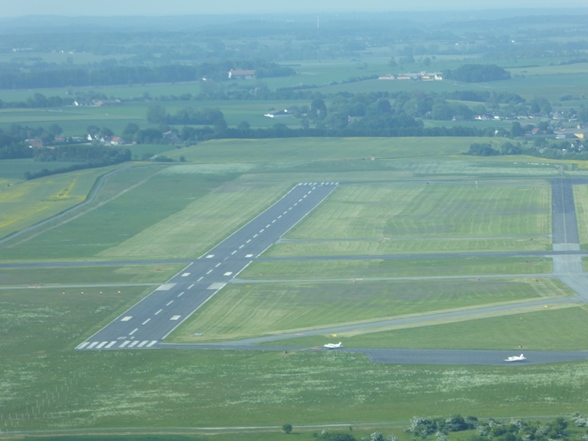
When I told the controller we would leave again after half an hour I was instructed to park “below the tower”, one can see how I interpreted that below.

After refuelling we continued towards Sweden, a new country with my plane as well as for me as a pilot. Soon after crossing from Helsingør to Helsingborg the forest started, and after a short while there was nothing else but forest and lakes.

I sometimes wondered where I would make an emergency landing in case of an engine failure, but luckily the engine does not know what you are flying over.

The weather was ok to the east, but looked poorer towards the west, so we deviated a bit eastwards. The further we got the better it looked, as we were moving faster than the weather.


We had an impressive 25 to 30 kts of tailwind, reaching a ground speed of up to 135 kts, which helped us to get to our destination before noon.


Below Falköping airport, a fairly modern one with a nice, long asphalt runway. One can already see the lineup of parked planes, in the end there were around 65 to 70.

Here on final, which looks high but with the pretty strong headwind (landing towards the south) it was no problem to descend.
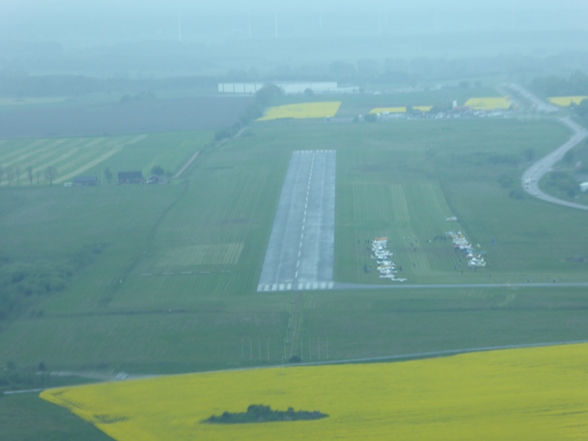
Just when we were on final it started raining, which miraculously washed away all the bugs we had collected over the last three days, which helped me to display a nicely clean plane.
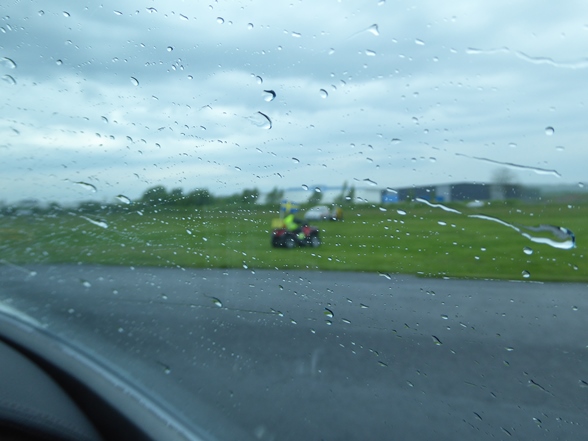
There was a warm welcome, I had the feeling nobody expected somebody to arrive from so far away.

It was pretty windy and cold, as can be seen on the face of my wife, and also on the windsock in the rear.

Luckily the kids below did not realise that there was somebody (us) coming from a place where it was 30 degrees and sunny, they probably couldn’t have understood why we flew here.

Below the Swedish version of a follow me car.

As the flight display was cancelled due to the wind we decided to go to town, and a very friendly elderly Swedish couple gave us a lift to get there. Only then we realized that the game of the day before was repeating itself, this time it was Swedish National Holiday and everything was closed again. Aargh…




After having some coffee in the only place that was open we called the shuttle bus organized by the EAA to get back to the airport and put up the tent on the lee side of the plane. This later proved to be a good idea, some others were really struggling keeping their tents standing. At least the wind blew away the rain, as can be seen in the partially blue sky.


The wind did not calm down, however, as visible on the large array of Swedish flags next to the airport.

One of the few things on display was a homebuilt seaplane of ingenious design, and there was also a presentation in one of the hangars on the design. Unfortunately my Swedish was only good enough to decipher some of the key parameters from the slides.

We had a look at some of the hangars, which contained many peculiar planes such as the Swedish designed ultralight below (the silvery one). Note that the white plane on the left is a model plane…

Towards the evening most clouds had left the area…

…or rather been blown away as the wind was still pretty stiff.

We took the chance to look at all the planes, with quite a few special ones such as the one below.

That one was built by Götaverken, a ship building company, as GV 38 with the number representing the year it was built.

Some planes departed before the big dinner, some demonstrating the windy conditions.

A really cool one was this Seawind seaplane, a good choice as in Sweden one can land on nearly every lake with the exception of those in national parks.

The evening ended wit a very nice dinner, organized by the EAA, and a very late sunset…
Worth mentioning that I won the price for the longest journey to the event, a kilogram of a special local cheese. Also worth mentioning that I flew the cheese all the way to Switzerland, and that it was actually a really good cheese….

On Sunday, 07.06.2015, we got up early, noticing that the wind had neither calmed down nor changed direction, meaning headwind on our way back to Roskilde. The TAF predicted 12-15 kts in Roskilde until noon, with 28 kts gusts thereafter, so we decided to leave around 9 to be in Roskilde before noon.
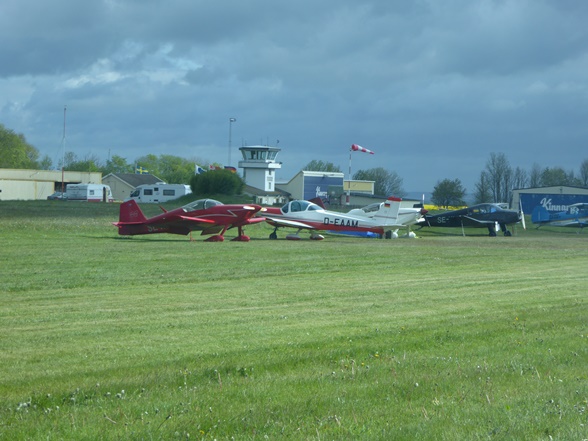
The way back was the same as the way up, with the difference that our ground speed was now 80 kts in 25 kts of headwind and visibility was significantly better. We saw a lot of nice farms, but none with a private airstrip…


Again forests and lakes and forests and lakes, Sweden at it’s best.


When reaching the coast I noticed from the waves how strong the wind was, not that I hadn’t noticed it before as this was one of the bumpier flights of my flying career.

Visibility did improve, however, the closer we got to Denmark.

We flew over what looked like a military academy near Helsingborg, but I later found out it was a psychiatric clinic until the nineties.

Below Helsinør, with the famous Kronborg castle, where Shakespeare placed his Hamlet.

Back in Roskilde, this time on another runway due to changed winds.
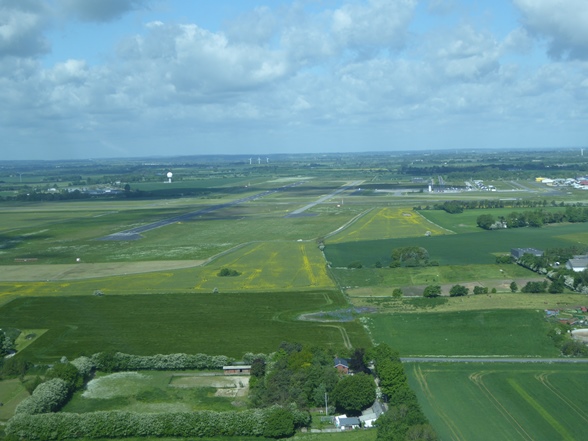
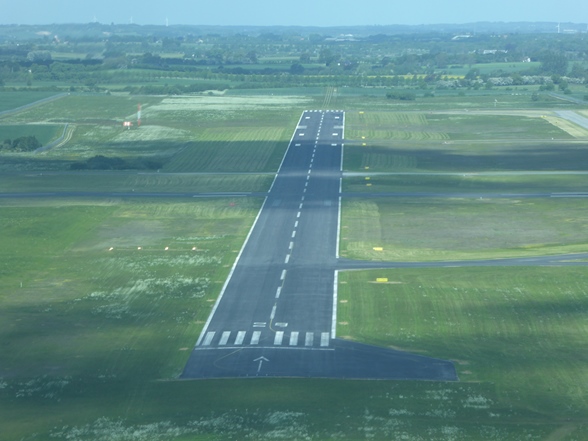
We stopped to see friends who live near Copenhagen, and continued on Monday, 08.06.2015 back to Switzerland. That’s a six hours flight, so a good day of flying counting some stops on the way. We refuelled again as on our way to Sweden, but only enough to get to Hildesheim with sufficient margin as they only have Avgas in Roskilde. Hildesheim has Mogas, which is not only cheaper but also better for the engine.

We passed again some nice castles..

..and the ferry terminals from Rødby..


…and Puttgarden.

The comes the Fehmarn bridge. I slowly know the way, as this is the third time in Denmark.

The again past some lakes in Mecklenburg,…

…over the Elbe river,…

…past the locks near Uelzen which provide a 23 m lift…

…and then to Hildesheim for fuel and food.

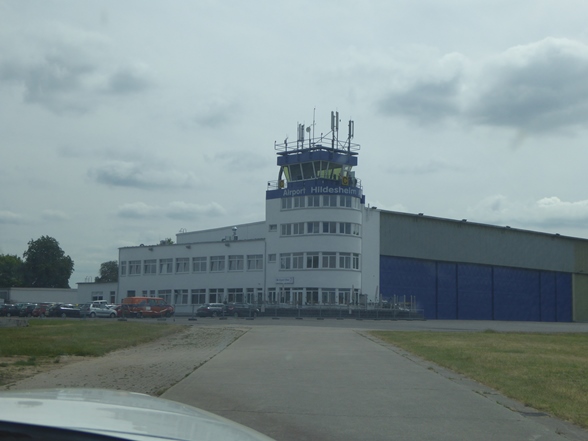
From Hildesheim south the weather turned worse and worse, so we did an unscheduled landing in Giebelstadt (EDQG). We waited there for about one hour and a half, as the radar showed that the weather was moving east, and then took off again for our flight to Friedrichshafen. The extremely helpful controller from Langen gave us weather reports from places along our route without even asking for it, but near Stuttgart the weather turned worse again, with better visibility to the west. We decided to fly around Stuttgart CTR on the western side, hoping for a path south. This first looked good, but near Tübingen things got worse again. We already turned back when I heard a plane that had contacted Langen after departing from Konstanz and the controller asked the pilot how the weather was down there. When he told her that he had big patches of blue sky she contacted us and proposed we climb and fly on top, clearing us to climb into the TMA. The cloud layer was not very thick and a descent was no problem further to the south according to the pilot from Konstanz, so we picked that option. I found a bigger hole in the cloud layer above us, so we climbed up to around 4’000 ft and looked south. One could already see the end of the cloud layer, so we decided to take the chance and flew for maybe 15 minutes on top until things really improved, allowing us to safely descend again.
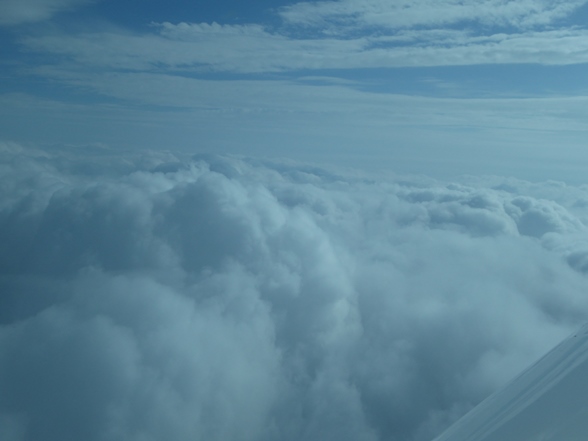
We then headed straight to Friedrichshafen, arriving there around one hour before our pre-announced landing time for Lommis at 19:00. One can see one of the Zeppelins, the same type we were flying in only one week ago.
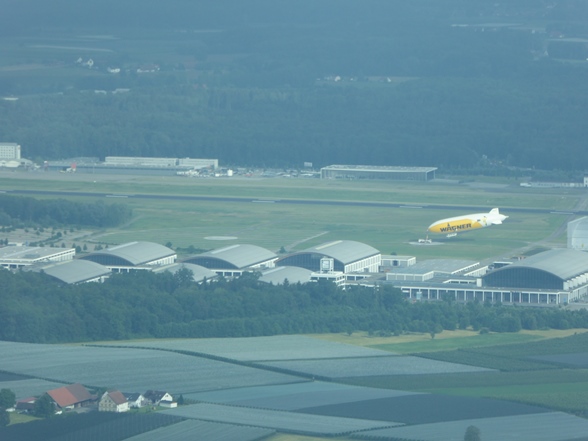
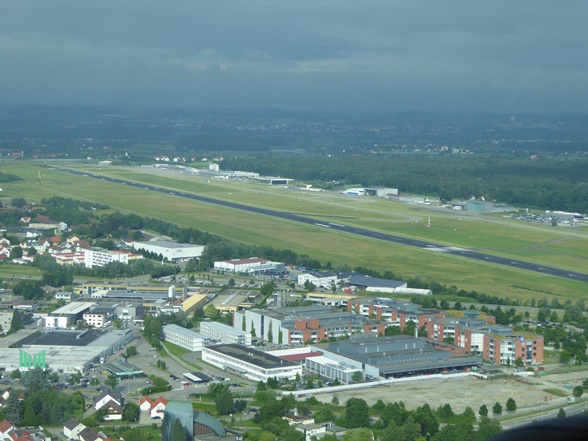
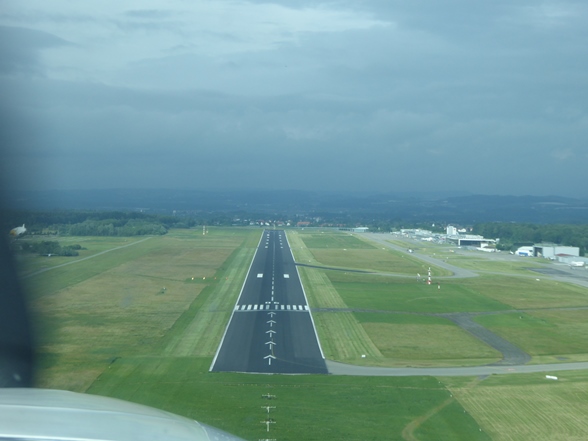
Friedrichshafen demonstrated great flexibility, as they allowed us to continue after lading without having to disembark, in order to make it back to Lommis at the announced time where customs might wait for us. I asked the tower for a quick turn around and he told us to wait on the taxiway, he then came back after contacting customs and asked whether we had any goods with us, and when I told him no we got cleared by customs to depart. So we taxied back to the runway and just took off again. Of course I called them later to pay the landing fee by credit card. That was excellent service, and confirmed once more my so far always very good experience with German air traffic controllers and airports.
Towards Konstanz the clouds were again low, but from there it’s only 10 miles and I would find by way back to Lommis even in the poorest visibility.

Summary
A great five day trip, which felt like a much longer holiday as we saw so many different places and met many nice people.
The trip in figures:
The trip resulted in 17:15 hours and 12 landings in the pilot log book (block time), with 16:08 hours airborne time in the aircraft log book.
According to PocketFMS, my flight planning software, the trip should have taken.15:21 of airborne time over 1525 nm, not counting some of the smaller detours so that’s quite accurate.
We consumed around 310 l of fuel for the whole trip, which gives an average consumption of 19.2 l / hour, which is correct as I normally fly long legs, as well as legs with strong headwind at a high power setting of around 5300 rpm, and we had many long legs and a few with pretty strong headwinds (but also some with tailwind).
If I deduct 5 minutes for each takeoff and landing, the average speed flown is around 108 kts, which again corresponds nicely with the high power setting.
18.06.2015: Last year we decided to modernize the aircraft fleet of our club, and ordered two Aquila A-211 two seat aircraft for basic training / leisure flying and one four seat Robin DR-401 for more serious travelling even with four persons. While the Aquila are Rotax powered we selected the Diesel engine for the Robin.
As these aircraft much more fuel efficient and quiet than the planes they are replacing we decided to organize a kind of public day for next weekend to promote our efforts to reduce noise and pollution, but we did not consider the difficulty aircraft manufacturers are having to meet long agreed schedules. Until this morning we only had one of the three aircraft delivered, but a lot of pressure resulted in getting the Robin delivered today. Below some pictures of it’s arrival.
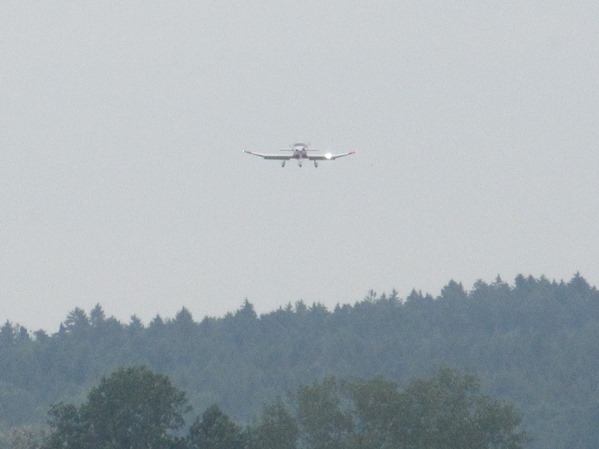


We also decided to rebuild our playground, as during summer we have quite some families visiting the airfield with kids, and that was the same story. The contractor will only finish the last works tomorrow; one days before our public day. When planning the playground we made sure that we have some kind of control tower for the kids, and we even installed a radio in it so kids can listen to the pilots.
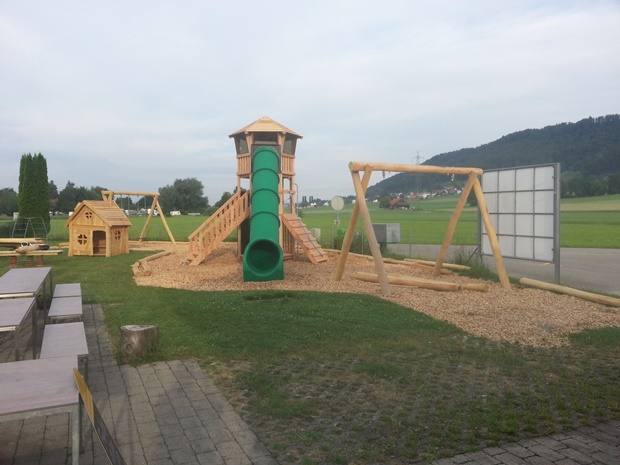
20.06.2015: We had our little airport feast yesterday, baptising our three new aircraft (ok, one is not yet delivered, so we used a photo for that one) to the names of the three villages surrounding our airfield. With representatives of the three villages present and the local marching band playing that was a really good way to express and maintain the good relationship we are having with them.
The “ceremony” started with some low passes and the subsequent landing of the new planes, nicely demonstrating how quite they are.

The weather was not too good, cloudy with a few short showers but also some sun in between. But still there were a lot of visitors an a very relaxed and nice atmosphere. We did not have any airshow, but our friends from the tow nearby glider airfields sent some planes and Ju-Air managed to have a low fly-by of a Junkers Ju-52 which was anyway on it’s way to Germany. It was accompanied by two Bücker Jungmann based at our airfield.



We also had an exhibition from the homebuilders club, with my plane displayed together with two others, that was extremely successful. We had to answer question on the planes from 9 in the morning to 5 in the evening without interruption. A lot of people have no idea that it actually possible to build your own plane, and that there are seemingly normal people doing this as a hobby. Ok, my wife says that homebilders are not really normal, but that’s another story..
We also had our usual desk where kids can build small gliders, and that was cramped with kids the whole day. We actually run out of glider kits till the evening, building more than 80. That’s excellent publicity, as lots of kids from the villages around the airfield now find Lommis a cool place and maybe some of them will end up learning to fly on day, and possibly even as homebuilders.

30.06.2015: I had a meeting today with the European Space Agency at the ESTEC (European Space Research and Technology Centre) in Noordwijk, the Netherlands, so I decided my next project is going to be a spaceship 🙂
